The first few days of school are so important—it’s a chance to get to know your new students and set the tone for the year ahead. But finding icebreakers for high school students can be a real challenge. Older kids can see the usual “getting to know you” activities coming from a mile away. And they don’t want to risk looking silly or awkward in front of their peers.
So in order to gain real buy-in, you’ll need to choose activities that are meaningful and fun. The key is to make them forget themselves temporarily because they’re so wrapped up in the game or challenge. We have a little bit of everything on this list, from speed-dating-inspired activities to snowball fights. Most of them make terrific icebreakers for middle schoolers too!
- Getting To Know You Icebreakers
- Setting Classroom Expectations Icebreakers
- Team-Building Icebreakers
Getting To Know You Icebreakers for High School Students
Here’s a tip: Before you ask kids to tell you about themselves, be sure to introduce yourself first! We’ve got a great list of ways to introduce yourself to students here, and a lot of these can be flipped for your students to use too.
Now you’re ready to ask kids to reveal a bit about themselves. This is an opportunity to find ways to connect with them in the months ahead and for them to find new friends too. Here are some high school icebreakers that really do help teachers and students get to know one another.
1. Unpopular Opinion
You’ve probably seen the threads and viral videos where someone shares an unpopular opinion like “Kittens and puppies are annoying, not cute” or “Ketchup is gross.” As students introduce themselves, ask them to share one of their own unpopular opinions. They might be surprised to discover that some of their classmates agree!
2. Would You Rather?

Would you rather … do math homework or go for a 2-mile run? Read a book or watch a movie? Wrestle a gorilla or swim with alligators? No matter what questions you ask, this is such a fun way for kids to mix and mingle. Pose your question, then have kids move to different sides of the room to show their answers. Give them a few minutes to chat about the topic before moving on to the next one. Check out the Would You Rather questions on this list to get started.
3. Classmate Bingo
Use this free bingo card generator to create your own Classmate Bingo cards. Give one to each student, then set them loose to find another student who can initial each space. If you have enough kids, make a rule that each student can only initial one space on any card. Offer small prizes to the first student to fill in a row and the first to fill their whole card.
4. Blobs and Lines
Students respond to prompts either by lining up (in order of height, birthday, alphabetical by middle names, etc.) or gathering in “blobs” (grouped by type of shoes, hair color, favorite ice cream flavor, and so on). It’s ridiculously easy, low-risk, and gives teens a chance to find out what they have in common.
5. Speed Meetings
The old “interview each other and introduce them to the class” bit is pretty played out. Try this twist instead, which is a lot like speed dating. Divide the class in half, and have them sit in two concentric circles facing each other. Ask an icebreaker question, set a timer for 60 seconds, and let each pair discuss. When the timer dings, the outside ring moves one seat to the left. Give the new pairs a new question, and set the timer again. You can continue this as long as you like. Tip: To increase engagement, have kids help you generate the list of icebreaker questions before you start.
6. What Do You Meme?
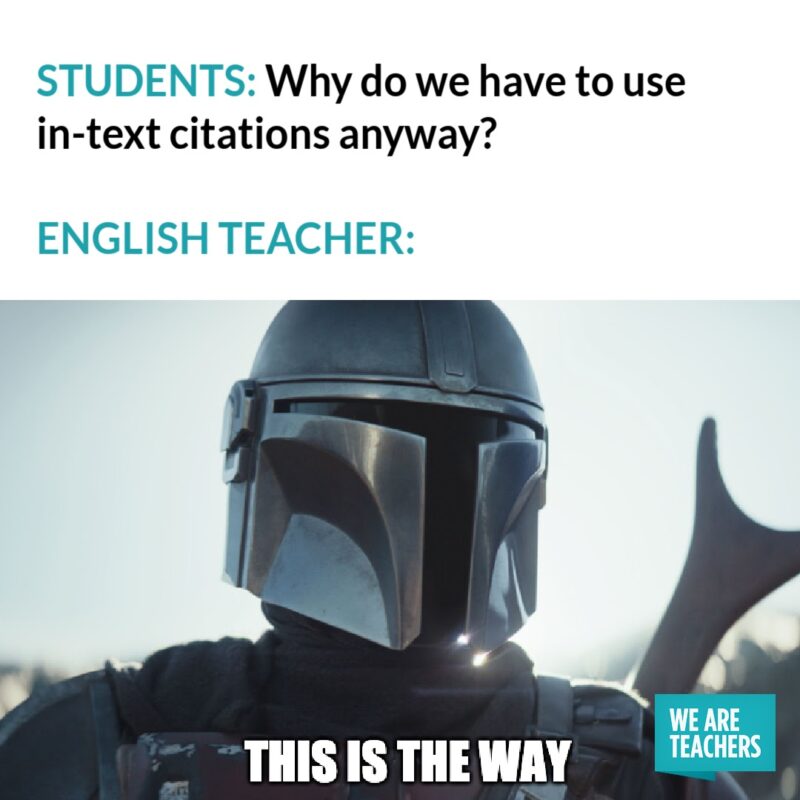
Find some popular meme images on the web, print them out, and post them in various places around your classroom. Start class by asking kids to find and stand by the meme that best represents how they feel about the subject you teach. Let them chat in groups for a minute or two, then pose a few more icebreaker questions for them to group together and discuss.
7. Collaborative Playlist
Music is meaningful to all of us, and the songs we love can be a window into our personalities. Ask each student to contribute one song choice to a class playlist, along with an explanation of why they love that song. (Depending on students’ ages, you can decide on parameters for lyrics and language.) Create the list on Spotify so all students can listen to one another’s songs. If you allow music in your classroom, add this playlist to your collection.
8. Toilet Paper Pass
Some kids may already know this one, but it’s still a classic. Pass a roll of toilet paper around and tell students to take what they think they’ll need for the day. Once everyone has a handful, explain that for each sheet they took, they must share an interesting fact about themselves.
9. Two Truths and a Lie
This one’s another classic icebreaker, and for good reason. Ask each student to share two facts about themselves and one lie, without identifying which one is untrue. Other students try to guess which one is the lie. Kids always have fun coming up with stuff to fool each other!
10. A Funny Debate
Debate team isn’t for everyone, but there is a way to make it fun for the whole class. The key is to pick a not-so-serious subject like what is the best pizza topping or whether or not clowns are scary. Then, watch as your students get into defending their positions. If you need ideas, check out these funny debate topics.
11. Word Clouds
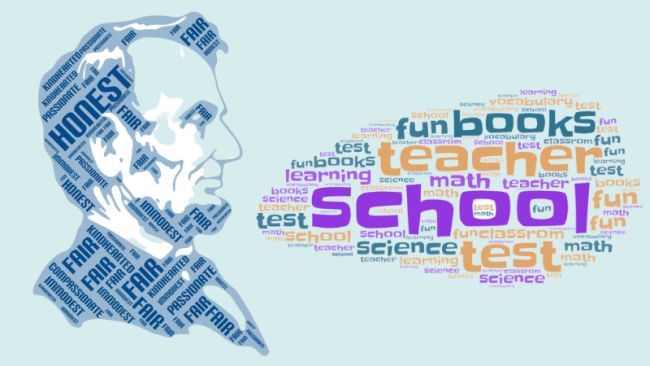
The words we choose to define ourselves can be really telling, and word clouds are a fun way to see that in action. Kids can create word clouds by hand on paper, or try one of these free online word cloud generators instead.
12. Stand Up, Sit Down
This one is super easy, and it’s a perfect use for these icebreaker questions. Simply ask a question, and if students answer yes, they stand up. If no, they sit down (or stay seated). You can fly through questions quickly, or slow down to see what everyone’s answers are.
13. Paper Planes
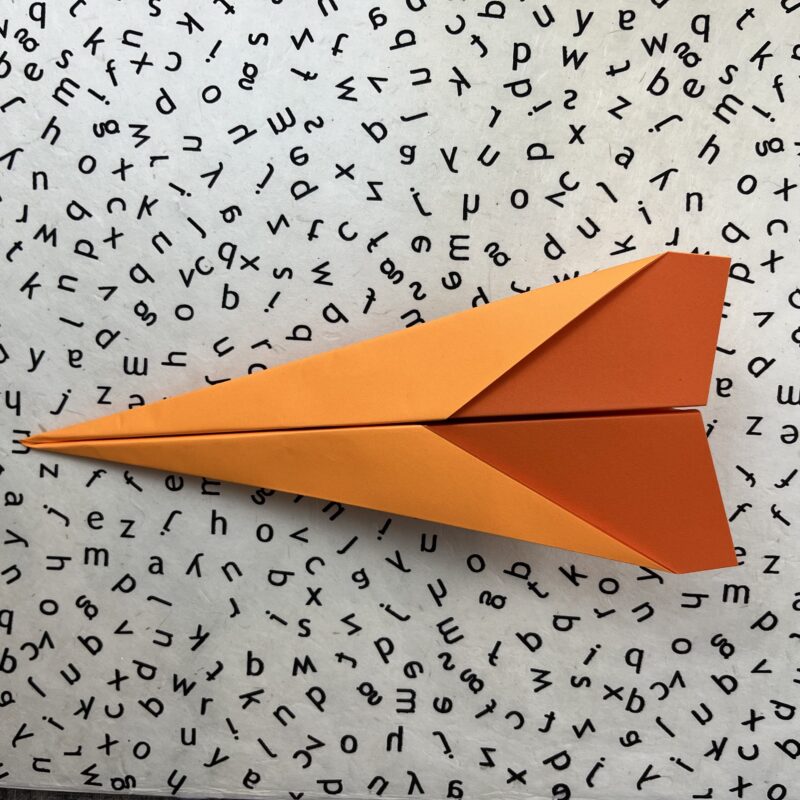
Each student writes a get-to-know-you question on a piece of paper. (Encourage them to think creatively so you don’t wind up with the same question over and over again.) Then, they fold the paper into planes (Here are some free printable paper airplane folding directions.) and spend a minute throwing them across the room. Afterwards, everyone picks up a plane and they take turns answering the question on theirs.
14. Common Thread
Divide students into groups of four and have them sit together in these small groups. Give each group five minutes to chat among themselves and find something they all have in common. It could be that they all play soccer, or pizza is their favorite dinner, or they each have a cat. Whatever the common thread, the conversation will help them get to know one another better. Repeat this activity in new groups as many times as you like.
15. Show-and-Tell
You’ll need a little advance planning for this one, but it’s always a lot of fun. Ask students to bring something for Show-and-Tell on the first day of class to help their classmates get to know them a little better. They’ll feel oh-so-grown-up as they reminisce about how fun Show-and-Tell was when they were “young”!
16. Beach Ball Toss
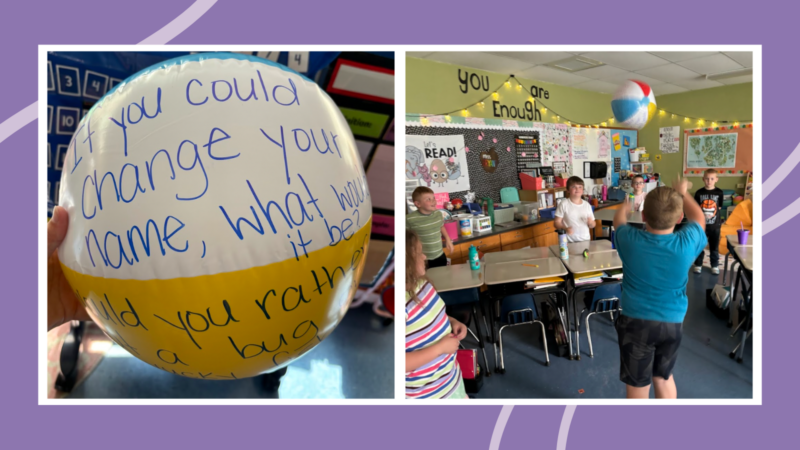
Write some icebreaker questions on a beach ball. Start the game by tossing the ball to a student at random. Ask them to look at the question their right thumb landed on, then share their answer with everyone. Then, they toss the ball on to someone else. Continue until everyone has had a turn.
17. Say Hello!
Here’s a super-simple icebreaker for high school students. Sit in a circle (or at least in a way that makes it easy for everyone to see each other). One student stands up and says, “Hi, my name is [name].” The whole class responds, “Hello, [name]!” They sit down, and the next person does the same. This is a terrific way to learn names, and it gives kids a chance to help others learn to pronounce theirs if it’s a little tricky.
18. Favorite Quote
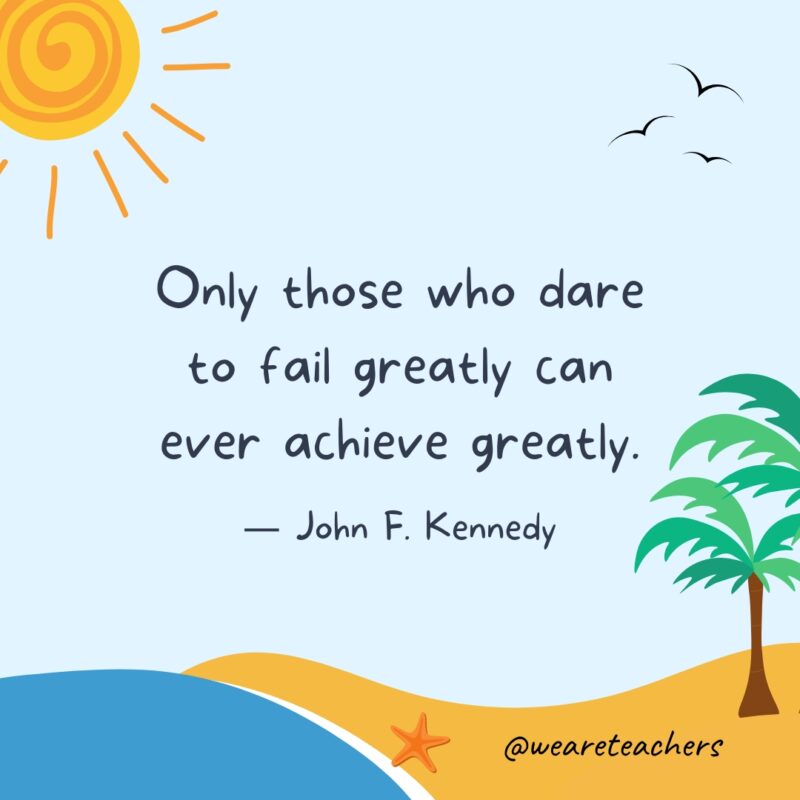
Give everyone a piece of paper and a marker, and ask them to write their favorite inspirational quote. You can give them a little time to do some web research; use our enormous collection of quotes to get started. Afterwards, use the quotes to decorate your classroom walls.
19. Candy Pass
Pass around a bowl of wrapped candy that comes in different colors, and ask every student to choose just one but not eat it yet. After everyone has theirs, tell them they each must answer an icebreaker question based on the color they picked. (For instance, if you picked red, share the best meal you’ve ever eaten. If you picked green, tell us your favorite joke.) Be sure to hide the questions until everyone has their candy in hand!
20. Find Me
Ask each student to write a unique fact about themselves on a note card. Gather and mix them up, then pass them back out randomly. Have students mingle and chat until everyone has found the person who matches the card they’re holding. You can repeat this over and over again so everyone has a chance to meet up and chat.
21. Fakebook Page
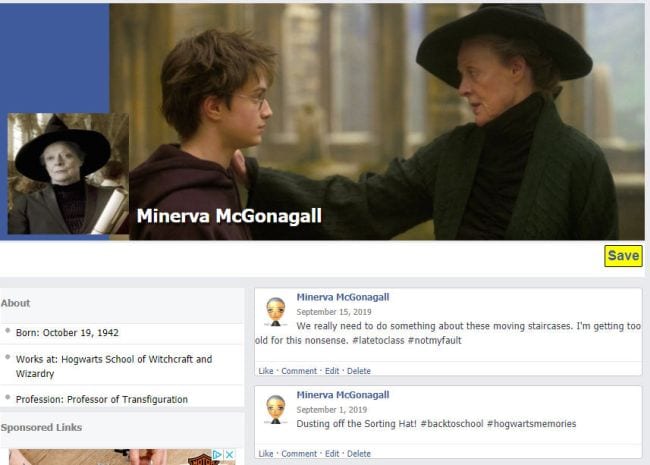
Your students may or may not use social media in real life, but they can all use this classroom-safe free online Fakebook generator. Kids can personalize these in ways that are appropriate for school. (This also gives you a good opportunity for a lesson on responsible digital citizenship.)
Setting Classroom Expectations Icebreakers for High School Students
Many teachers start the first day of school by sharing their classroom rules, assigning seats, and introducing the year’s agenda. Now, let’s be honest: Most kids tune out when you start sharing your rules. They’ve heard them all before, right? So, try giving your students some ownership over the expectations in your classroom. You’ll be surprised at how this can be a real game-changer.
22. Seating Plan Spin
In the beginning, any seating chart you create is pretty arbitrary. The main purpose is to have students in the same seat each day so you can get to know their names, right? So start out by letting students decide how the initial seating chart works (but they CAN’T pick “sit wherever we want”). They might suggest options like “alphabetical by middle names,” “grouped by birthday month,” and so on. Then, they vote to choose the winner. Finally, kids figure out how to get themselves into the right seats using the rules they chose.
23. Right or Wrong Skits
First, share your classroom rules and expectations. Then, divide kids into small groups, one for each rule. The group has 10 minutes to prepare short skits showing the right way to follow the rule and the wrong kind of behavior. Kids really have fun hamming up the wrong behaviors, and they’re all much more likely to remember your rules.
24. Classroom Constitution
By middle school and high school, students tend to know instinctively the rules they need to follow. Give them ownership by letting them draw up the class constitution. Brainstorm expectations for a good classroom, then create the guidelines they’ll need to follow to make that happen. Craft the language and have everyone sign. This is a project that can take more than one day, but it’s especially fun in social studies, history, and government classes. Get a free online lesson to walk you through the process here.
25. Shared Goals
From day one, you’ve got an agenda with lesson plans ready to go, of course. You’ve probably got standards to follow and routine projects you do every year. But that doesn’t mean you can’t take time on the first day to find out what your students really want to know. Post a few anchor charts around the room with the questions listed below. Have kids circulate and write their answers on the charts. Then, look each one over as a class and talk about the responses. Try these:
- What do you think you’ll learn in this class this year?
- What do you really want to learn in this class this year?
- How can your teacher help you learn and succeed?
- What are you most looking forward to in this class?
- What do you dread most about this class?
26. Blind Kahoot
Here’s another fun way to introduce your class to what they’ll be learning. Create (or find) a Kahoot that covers the basic fundamentals of your syllabus. Kids will likely moan and groan over each question, but it will give you a chance to learn what they already know, and help them discover what’s coming in the semesters ahead.
27. Student Expectations
Start by writing “Expectations” on a whiteboard. Then go around the room and have students do three things: They should introduce themselves, share their expectations of the class, and, finally, share their idea about the best possible outcome if their expectations are met. An example might be, “Hi, my name is Harper. I’m expecting to learn to see different perspectives. My wildest expectation is that if I knew how to do that, I would become more open-minded and make friends with more people.”
28. Rules Snowball Fight
Once you’ve gone over classroom rules and expectations, hand out blank pieces of paper to your students. Then, have them try to remember those rules and write one on their paper. Now for the fun part: Have them crumple up the papers and throw them inside the circle. Finally, have them grab any paper, read it, and elaborate on the importance of the rule.
Team-Building Icebreakers for High School Students
Team-building activities can be a lot of fun, though you’ve got to pick them carefully, especially with this age group. Be sure to debrief when you’re done—ask students to think about why you had them do this activity and what they learned from it. And if you’re choosing something physical, remember that not everyone in the class may be able (or willing) to participate, so think about how you’ll handle that in advance. Find a list of our favorite team-building games and activities here, which are great to use for high school and middle school icebreakers, or try some of the following ideas.
29. Tarp Flip Challenge
Spread a few tarps on the floor. Get groups of students to stand on them. The challenge? They have to flip the tarp completely over without stepping off of it. Other students can watch to help keep them honest!
30. Scavenger Hunt
There are so many ways to use scavenger hunts as high school and middle school icebreakers. Is this a new school for your students? Send them out to explore it. Want to show them around your classroom? Set up a hunt for different areas and resources. Just want a fun chance to get to know them? Do a hunt to see which group can produce various items (purple pen, hair scrunchie, breath mint, etc.) from their bags or pockets the fastest. The point is to get kids working together in groups and having a little fun. (Grab our free collection of printable scavenger hunts here.)
31. Classroom Escape Room
If you really want to impress and engage your students, start off with an escape room. You can theme it to help them learn more about you, about the school, or the subject you’re teaching. Kids will have to work together to beat the clock, and each student’s individual skills will make the group stronger as a whole. Here’s how to set up your own classroom escape room.
32. STEM Challenge
STEM challenges are great high school and middle school icebreakers because they get kids thinking outside the box and working together. There are so many you can try, and they almost all only require the most basic of supplies. Looking for ideas? Find our big list of STEM activities for all ages here.
33. Perfect Square
This activity requires strong verbal communication and cooperation. Kids need to be blindfolded, so you may want to allow some students to opt out and be observers instead. Blindfolded students try to take a piece of rope and form a perfect square. It’s harder than it sounds, but if kids master it too quickly, ask them to try a harder shape, like a circle or a hexagon.
34. Classification Challenge
Prepare a tray (or a picture collage) with 20 unrelated items—for instance, a spool of thread, an eraser, a juice box, etc. Divide your class into groups and challenge them to put the 20 items into four categories that make sense to them. For example, they may put an earring, a glove, a headset, a sock, and a smile into the category “things you wear.” Have groups work quietly so that their ideas are kept secret. When each group is finished, give each one time to present their categories and their rationale behind each category.
35. Follow the Leader
Ask for a volunteer guesser and have them leave the room. While they’re gone, choose a leader and have the group stand in a circle. The leader begins a movement, which the rest of the group must mimic. (For instance, the leader might jump up and down or wave their arms over their head.) Invite the guesser back in to stand in the middle of the circle as the movements continue. Every so often, the leader changes the movement, and the rest of the group follows. The guesser must try to determine who the leader is by watching the group’s actions closely.
36. Game Day
Imagine your students walking into class on the first day to find a stack of board-game boxes! Games actually make terrific icebreakers, and lots of them help you with team building too. Try cooperative party games like Codenames, Herd Mentality, Pictionary, or Decrypto. Find more terrific classroom games here.
37. Balloon Tower
First break your class into small groups of four to six students. Then supply each group balloons in a variety of sizes and shapes, and a roll of masking tape. Give each group several minutes to brainstorm techniques before they actually start building. Finally, challenge each group to build the tallest tower they can. We love that this activity will get even the shyest of students talking!
38. No-Hands Cup Stacking
So simple and so fun! Students use a rubber band attached to pieces of string to pick up and stack cups into a pyramid. Want to make the challenge even greater? Don’t let them talk while they’re working, limit them to one hand only, or make the strings different lengths.
39. Password
One student sits with their back to the whiteboard while the other students sit facing them. Write the secret “password” on the board, and set a timer for 60 seconds. The other students must figure out how to get the player to say the word written on the board, without using it directly. Make this even more challenging by telling them they can’t talk at all.
40. Emoji Charades
Here’s a modern take on a classic game. Print a variety of emojis on cards, then mix them all up and place them upside down in a pile. One student comes to the front of the room and draws a card, then tries to act out the emoji for other students to guess.
41. Human Knot
Speaking of classic games, this icebreaker has been around for a very long time, but it’s still a popular pick. Students stand close together and put their hands in the middle, each grabbing two other hands at random and creating a giant “knot.” Without letting go, students must slowly untangle the knot until they’re standing in a circle (it’s OK if some people are facing forward and some are backward). It seems like an impossible challenge, but it can be done!
42. Silent Line-Up
This icebreaker helps kids get to know each other while also encouraging teamwork. As you call out each instruction, students must figure out how to line up properly without talking at all. Start out easy by asking them to line up by height. Move on to a more challenging task: lining up in order of birthdays (January at one end, December at the other). Tricky but fun!
What high school and middle school icebreakers do you use? Come share in our We Are Teachers HELPLINE group on Facebook!
Plus, get Free 15-Minute Icebreakers here!


